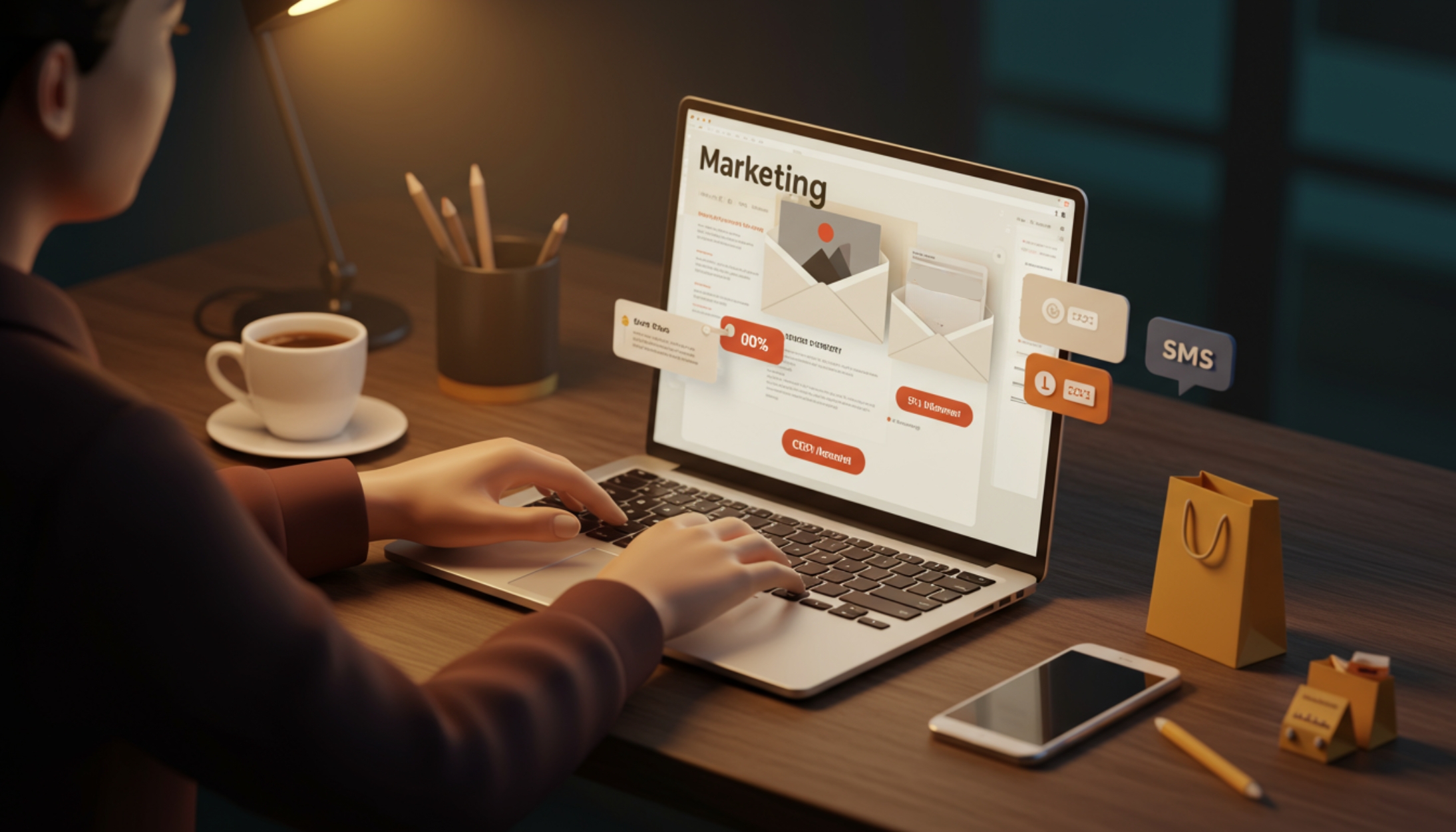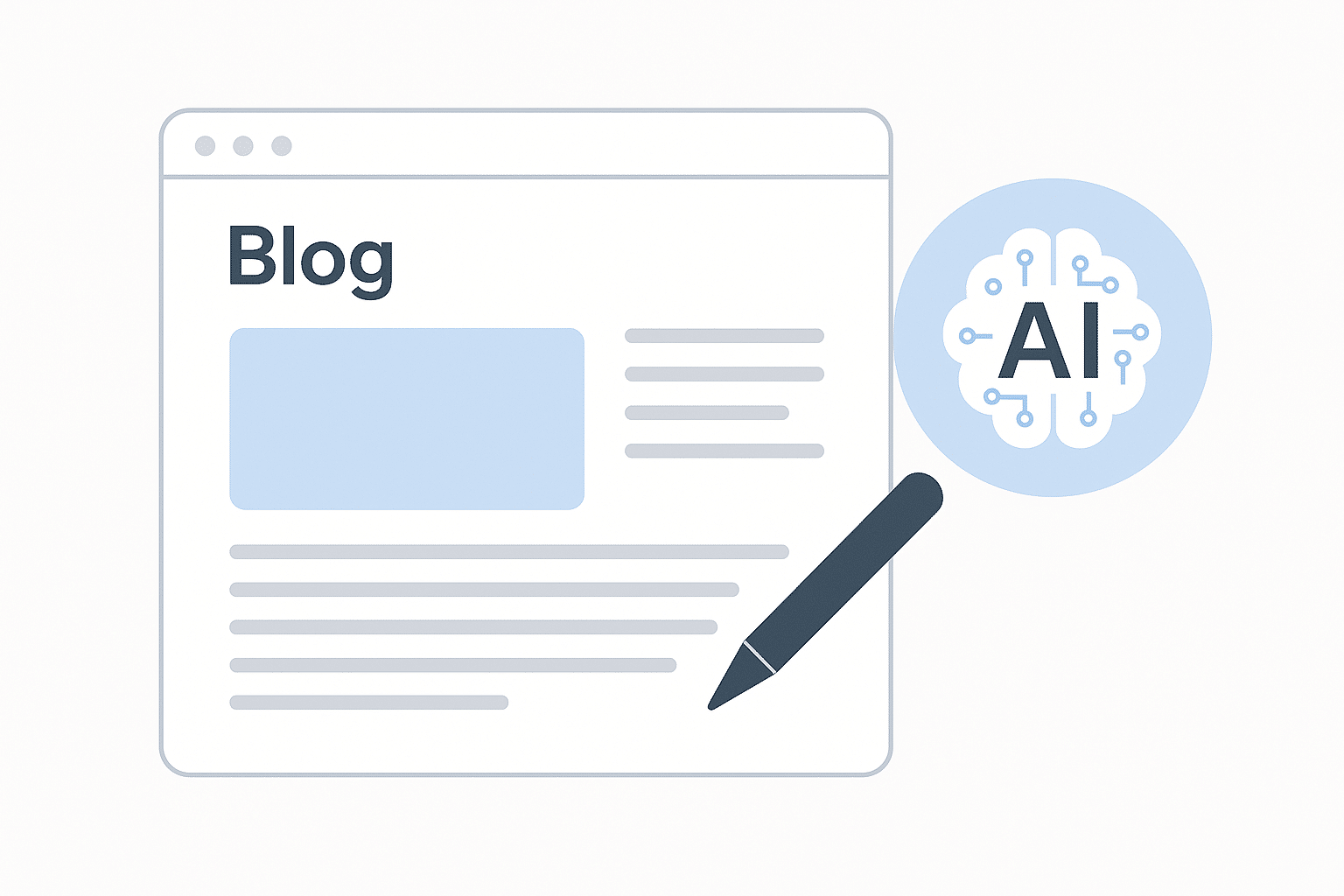Table Of Contents
- Start a Clothing Brand
- Conduct Market Research
- Define Your Brand Identity
- Develop Your Fashion Design Skills
- Create a Clothing Business Plan
- Follow Fashion Trends
- Build a Strong Brand
- Find a Clothing Manufacturer
- Check the Quality of Your Product
- Choose a Sales Channel
- Price Your Products Right
- Begin Marketing and Selling Your Custom Apparel
- Secure Funding or Investment
- Obtain Necessary Permits and Licenses
- Hire a Team to start a clothing brand
- Monitor Your Progress
- FAQs
Starting A clothing Brand
Starting a clothing brand is an exciting venture that combines creativity with entrepreneurship. It involves designing unique apparel that resonates with your target audience, establishing a strong brand identity, and navigating the fashion industry’s competitive landscape. From conceptualizing designs to sourcing quality materials and managing production, every step requires meticulous planning and a keen eye for detail. By leveraging digital marketing and e-commerce platforms, you can reach a global audience and build a loyal customer base. Passion, innovation, and a clear vision are key to turning your clothing brand into a successful and recognizable name in the fashion world.Step 1: Conduct Market Research
 Before venturing into the world of fashion, it is essential to conduct thorough market research to identify
gaps, trends, and potential competitors. This research will help you understand your target audience, their
preferences, and the latest fashion trends. Here is a detailed guide on how to conduct market research:
Before venturing into the world of fashion, it is essential to conduct thorough market research to identify
gaps, trends, and potential competitors. This research will help you understand your target audience, their
preferences, and the latest fashion trends. Here is a detailed guide on how to conduct market research:
Define Your Research Goals
The first step in conducting market research is to define your research goals. You need to identify what you want to achieve through your research. This will help you determine the type of research you need to conduct and the data you need to collect.Identify Your Target Audience
Once you have defined your research goals, you need to identify your target audience. You need to know who your customers are, what they want, and how they behave. This information will help you create a customer profile and develop a marketing strategy that targets your ideal customers.Choose Your Research Method
There are several research methods you can use to collect data. Some of the most common methods include surveys, focus groups, interviews, and observation. You need to choose the method that best suits your research goals and target audience.Develop Your Research Questions
Your research questions should be designed to collect the data you need to achieve your research goals. You need to develop questions that are clear, concise, and relevant to your target audience.Collect Your Data
Once you have developed your research questions, you need to collect your data. You can use online surveys, phone interviews, or in-person focus groups to collect your data. You need to ensure that your data is accurate, reliable, and relevant to your research goals.Analyze Your Data
After you have collected your data, you need to analyze it. You need to look for patterns, trends, and insights that will help you make informed decisions. You can use statistical analysis, data visualization, or other tools to analyze your data.Draw Conclusions and Make Recommendations
Once you have analyzed your data, you need to draw conclusions and make recommendations. It would help if you used your research findings to make informed decisions about your marketing strategy, product development, or other business decisions. In conclusion, conducting market research is an essential step in developing a successful marketing strategy. By following these seven steps, you can collect the data you need to make informed decisions and achieve your business goals.Step 2: Define Your Brand Identity
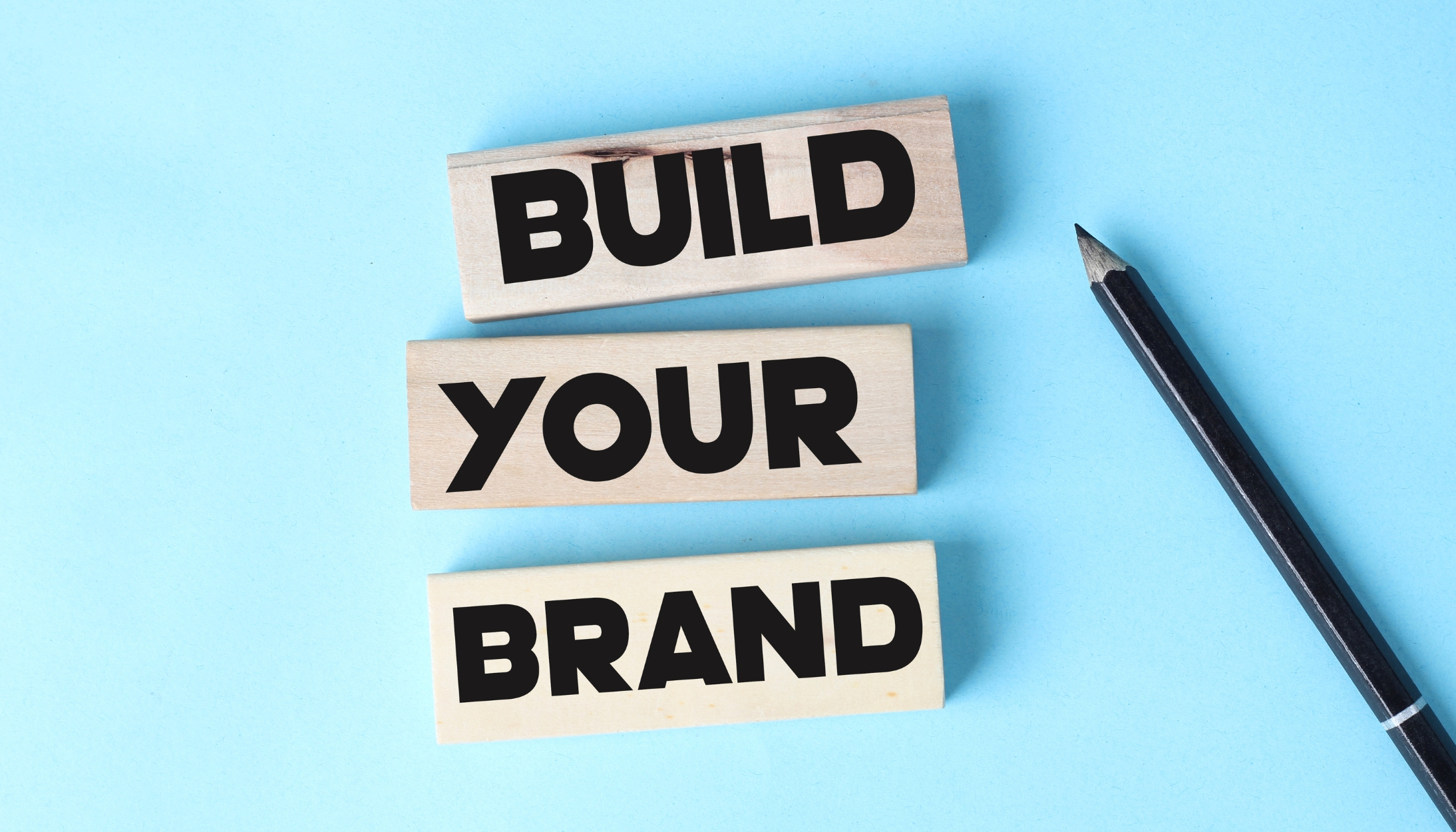 Your brand identity is what sets you apart from your competitors. It includes your brand name, logo, tagline,
and brand story. Your brand identity should reflect your values, mission, and vision. Here are some tips on
how to define your brand identity:
Your brand identity is what sets you apart from your competitors. It includes your brand name, logo, tagline,
and brand story. Your brand identity should reflect your values, mission, and vision. Here are some tips on
how to define your brand identity:
Define your brand values
Your brand values are the principles that guide your business. They should be aligned with your values and reflect what you stand for.Develop your brand story
Your brand story is the narrative that describes your brand’s history, mission, and vision. It should be authentic, engaging, and memorable.Create your brand name
Your brand name should be unique, memorable, and easy to pronounce. It should also reflect your brand’s values and personality.Design your brand logo
Your brand logo is the visual representation of your brand. It should be simple, memorable, and easily recognizable.Craft your brand tagline
Your brand tagline is a short phrase that captures the essence of your brand. It should be catchy, memorable, and reflect your brand’s values.Choose your brand colors
Your brand colors should be consistent across all channels, including your website, social media, and packaging. They should reflect your brand’s personality and values.Develop your brand voice
Your brand voice is the tone and style of your brand’s communication. It should be consistent across all channels and reflect your brand’s personality and values.Create your brand style guide
Your brand style guide is a document that outlines your brand’s visual and verbal identity. It should include your brand’s logo, colors, fonts, and tone of voice. In conclusion, defining your brand identity is crucial to creating a strong and memorable brand. By following these tips, you can create a brand identity that reflects your values, mission, and vision.Step 3: Develop Your Fashion Design Skills
Developing your fashion design skills is crucial to creating unique and innovative designs that appeal to your target audience. You can take fashion design courses, attend workshops, or learn from online resources. Here are some tips on how to develop your fashion design skills:Take fashion design courses
Fashion design courses can help you learn the basics of fashion design, including sketching, pattern making, and sewing. You can take courses online or in person.Attend fashion shows
Attending fashion shows can help you stay up-to-date with the latest fashion trends and styles. You can also network with other fashion designers and industry professionals.Read fashion magazines
Reading fashion magazines can help you stay informed about the latest fashion trends, styles, and designers. You can also learn about the history of fashion and the fashion industry.Learn from online resources
There are many online resources available that can help you learn about fashion design, including blogs, tutorials, and videos. You can also join online communities and forums to connect with other fashion designers.Practice your skills
Practice is essential to developing your fashion design skills. You can practice by sketching designs, creating patterns, and sewing garments. You can also experiment with different fabrics, colors, and styles.Get feedback
Getting feedback from other fashion designers and industry professionals can help you improve your skills and develop your unique style. You can attend workshops, join critique groups, or ask for feedback from your peers.Stay inspired
Staying inspired is crucial to developing your fashion design skills. You can find inspiration in art, nature, music, and other sources. You can also travel to different places and explore different cultures to find inspiration. In conclusion, developing your fashion design skills is a continuous process that requires dedication, practice, and perseverance. By following these tips, you can develop your skills and create unique and innovative designs that appeal to your target audience.Step 4: Create a Clothing Business Plan
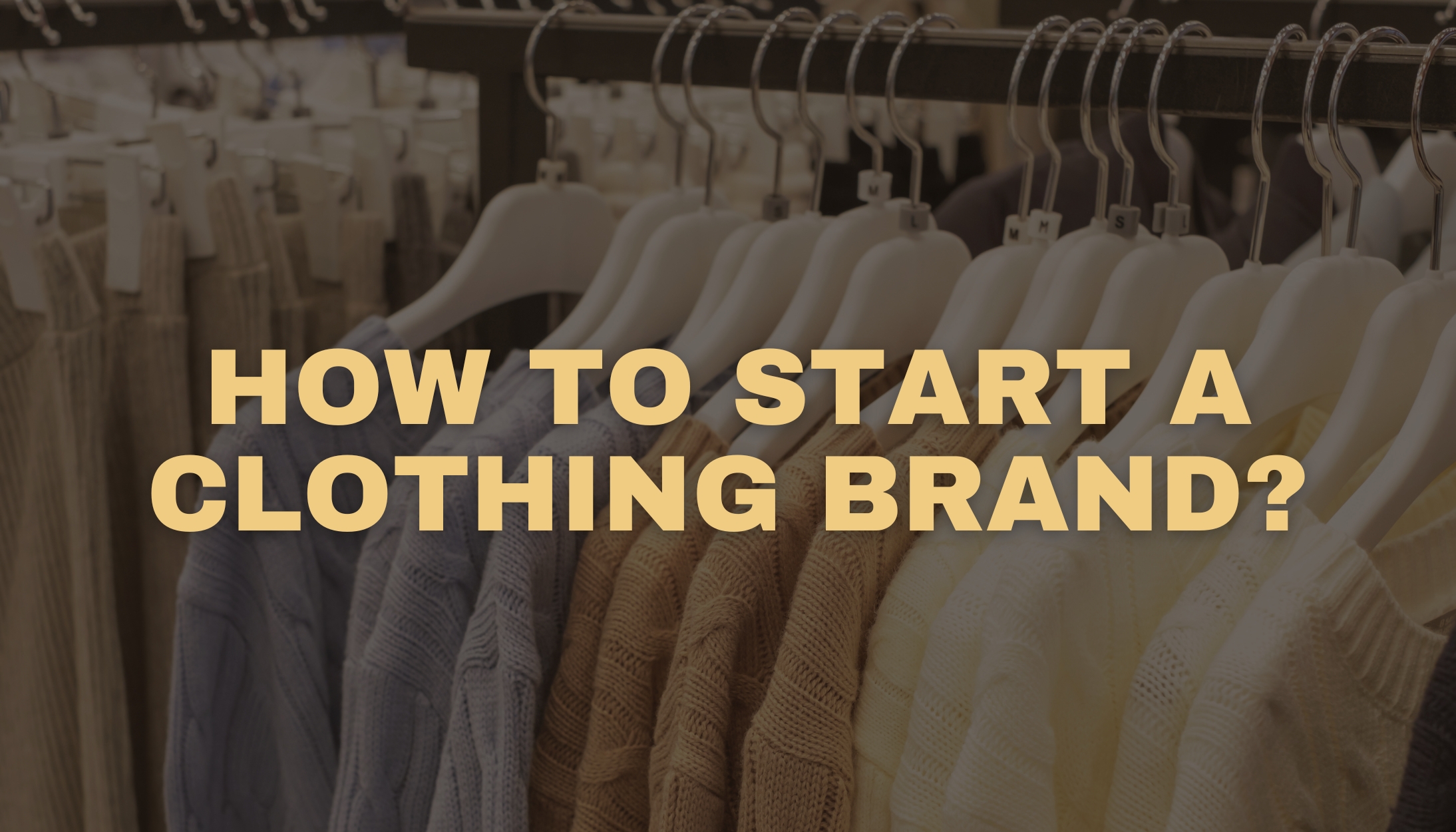 A business plan is a roadmap that outlines your business goals, strategies, and financial
projections. It should include your target market, marketing plan, sales strategy, and budget. Here are some
steps that can help you create a comprehensive business plan:
A business plan is a roadmap that outlines your business goals, strategies, and financial
projections. It should include your target market, marketing plan, sales strategy, and budget. Here are some
steps that can help you create a comprehensive business plan:
Find Your Niche
Identify your target market and create a product line that resonates with them. This will help you build a solid brand. For example, you could focus on activewear, vintage, denim, or high-street fashion.Know Your Audience
Determine your ideal customer and figure out where they shop, how often they shop, and what influences their buying decisions.Create a Marketing Plan
Define your company mission, understand resource needs, assess the competitive landscape and project growth.Name Your Brand and Create Brand Assets
Choose a name that reflects your brand’s identity and create a logo, tagline, and other brand assets.Register Your Business
Register your business and obtain any necessary licenses and permits.Design and Source Your Products
Create designs that align with your brand’s identity and source materials that meet your quality standards.Price Your Products
Determine the cost of production and set prices that are competitive and profitable.Distribute Your Products:
Decide on the distribution channels that work best for your business, such as online marketplaces, brick-and-mortar stores, or pop-up shops.Market Your Clothing Brand
Use social media, email marketing, influencer marketing, and other tactics to promote your brand and reach your target audience.Step 5: Follow Fashion Trends
Following fashion trends is essential to stay relevant and competitive in the fashion industry. You can follow fashion blogs, attend fashion shows, or subscribe to fashion magazines to stay up-to-date with the latest trends.Step 6: Build a Strong Brand
Building a strong brand is crucial to creating a loyal customer base. Your Company should be consistent across all channels, including your website, social media, and packaging.Create your online store:
Fathershops is a new-generation e-commerce platform that helps you create your online eCommerce store with many customizable features. You can sell and manage thousands of products with ease. It lets you run your online business from anywhere in the world and boost your sales by introducing your products to different marketplaces worldwide.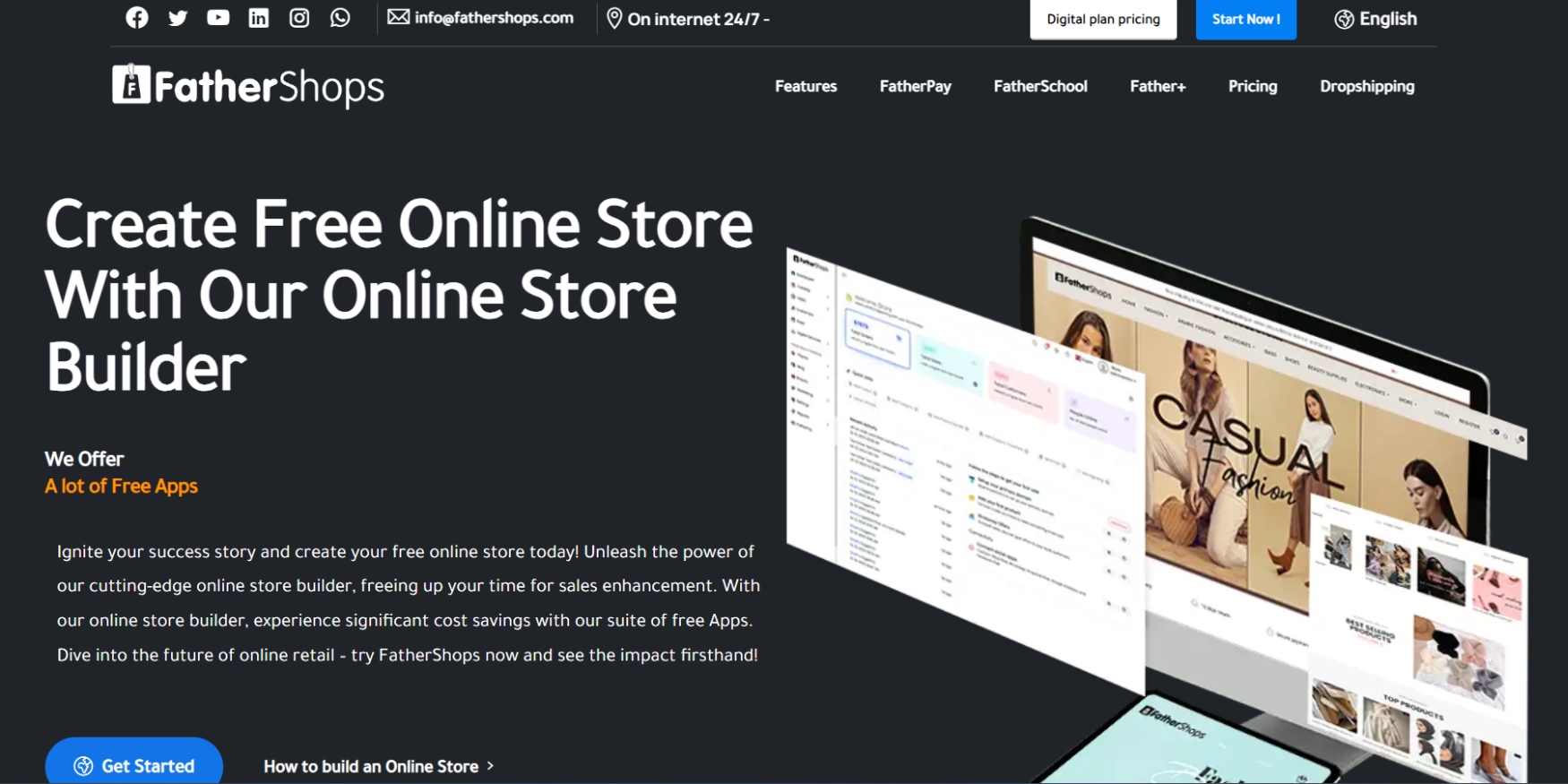 Fathershops provides a free
eCommerce store builder that allows you to create a beautiful store in no time without any
coding skills. You can access a smart dashboard, free premium apps, and fast-loading features. Fathershops
also offers secure Payments Gateways as well and 24/7 support. You can use Fathershops to launch your
business today and access worldwide dropshipping in
Australia.
Fathershops provides a free
eCommerce store builder that allows you to create a beautiful store in no time without any
coding skills. You can access a smart dashboard, free premium apps, and fast-loading features. Fathershops
also offers secure Payments Gateways as well and 24/7 support. You can use Fathershops to launch your
business today and access worldwide dropshipping in
Australia.
Step 7: Find a Clothing Manufacturer
Finding a reliable clothing manufacturer is essential to producing high-quality garments. You can search for manufacturers online, attend trade shows, or ask for referrals from other fashion designers. That’s right! Finding a reliable clothing manufacturer is crucial to producing high-quality garments. Here are some ways to find a clothing manufacturer: Online Search: You can search for clothing manufacturers online. Some popular websites to find clothing manufacturers include Billoomi Fashion India,SaleHoo, and Thomasnet Trade Shows: Attending trade shows is a great way to meet clothing manufacturers in person and learn more about their products and services. Referrals: You can ask for referrals from other fashion designers or industry professionals. This can help you find a manufacturer that has a good reputation and produces high-quality garments. I hope this helps! Let me know if you have any other questions.Step 8: Check the Quality of Your Product
Checking the quality of your product is crucial to ensuring customer satisfaction. You can conduct quality control tests, hire a third-party quality control company, or ask for feedback from your customers.Step 9: Choose a Sales Channel
Choosing the right sales channel is essential to reaching your target audience. You can sell your products online, in retail stores, or through wholesale distributors.Step 10: Price Your Products Right
Pricing your products right is crucial to generating revenue and staying competitive. You can use a cost-plus pricing strategy, value-based pricing, or competitive pricing.Step 11: Begin Marketing and Selling Your Custom Apparel
Marketing and selling your custom apparel is crucial to generating revenue and building a loyal customer base. You can use social media, email marketing, influencer marketing, or paid advertising to promote your clothing brand.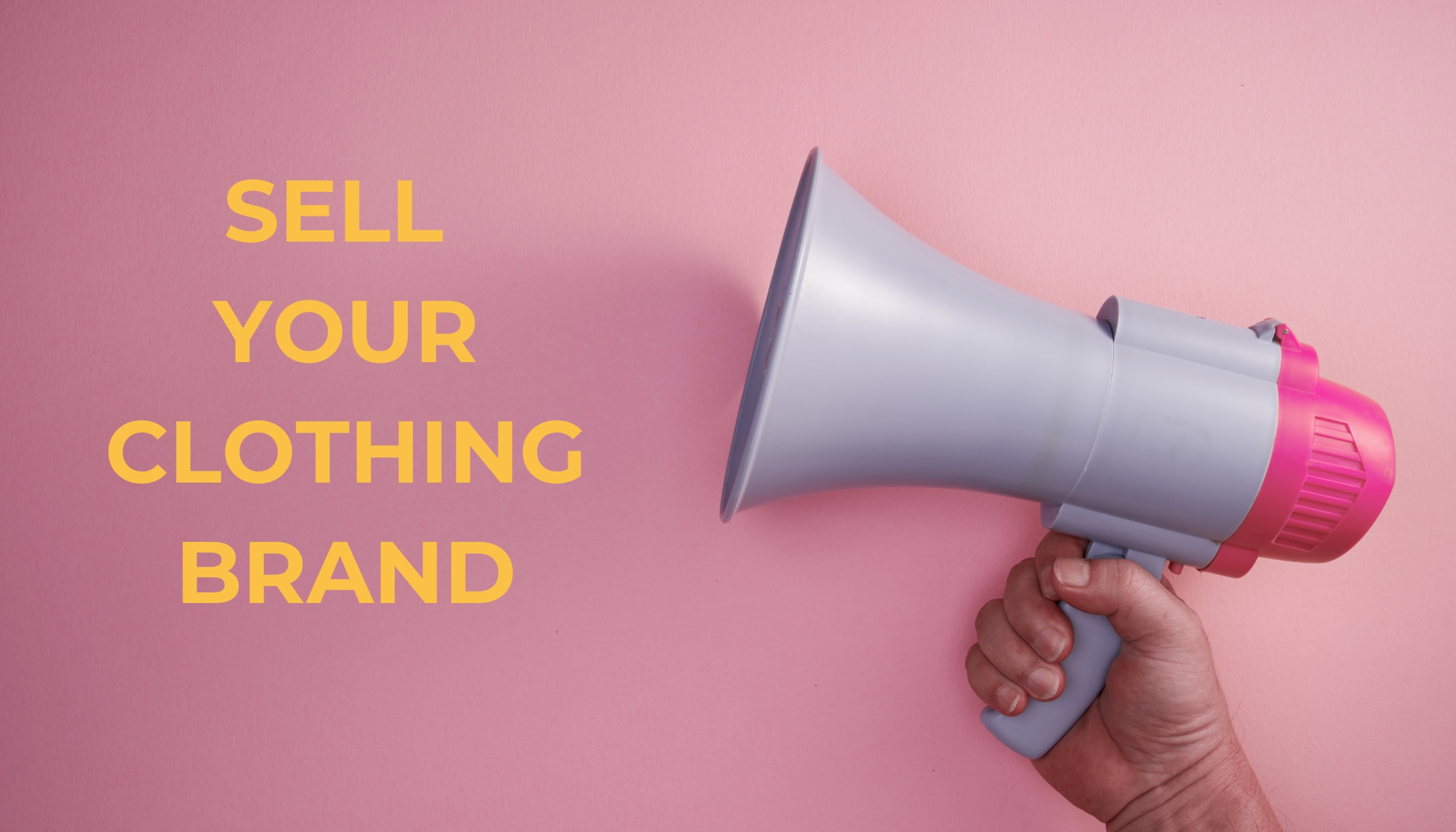 Step 12: Secure Funding or
Investment
Step 12: Secure Funding or
Investment
Securing funding or investment is essential to scaling your business. You can apply for a business loan, seek
investment from venture capitalists, or crowdfund your project.
Step 13: Obtain Necessary Permits and Licenses
Obtaining the necessary permits and licenses is crucial to operating your clothing business legally. You can obtain a business license, sales tax permit, or trademark registration.Step 14: Hire a Team to start a clothing brand
Hiring a team is essential to scaling your clothing brand business and delegating tasks. You can hire a fashion designer, marketing specialist, sales representative, or customer service representative. Here are some roles that you might consider hiring for your clothing business: Fashion Designer: A fashion designer is responsible for creating designs that align with your brand’s identity and vision. They work closely with the production team to ensure that the designs are executed correctly. Marketing Specialist: A marketing specialist is responsible for creating and executing marketing campaigns that promote your brand and products. They help you reach your target audience and increase brand awareness. Sales Representative: A sales representative is responsible for selling your products to retailers and wholesalers. They help you expand your distribution channels and increase sales. Customer Service Representative: A customer service representative is responsible for handling customer inquiries, complaints, and feedback. They help you maintain good relationships with your customers and improve customer satisfaction. You can find candidates for these roles by posting job listings on job boards, social media platforms, or professional networks. You can also ask for referrals from other industry professionals or use the services of a recruitment agency. Good luck with your clothing business!Step 15: Monitor Your Progress
Monitoring your progress is crucial to identifying areas for improvement and making data-driven decisions. You can use analytics tools, customer feedback, or sales reports to monitor your progress. In conclusion, starting a clothing brand requires careful planning, execution, and perseverance. By following these 15 essential steps, you can launch your clothing brand in 2024 and achieve success in the fashion industry.Read More
- Learn to Build an Ecommerce Website
- Follow a Checklist to Start an Ecommerce Business
- Discover the Best Ecommerce Platforms
- Start a T-Shirt Business
- Manage Ecommerce Inventory Effectively
- Explore Print on Demand
- Understand the Dropshipping Business Model
- Learn to Start a Skincare Brand
- Create High-Converting Product Descriptions
- Boost Retention with Ecommerce Marketing
FAQ’s
Starting a clothing brand can be an exciting and rewarding venture. Here are some frequently asked questions that can help you get started:1.What is a business plan?
A business plan is a formal written document containing the goals of a business, the methods for attaining those goals, and the time frame for the achievement of the goals. It also describes the nature of the business, background information on the organization, the organization’s financial projections, and the strategies it intends to implement to achieve the stated targets.2.How do I create a clothing business plan?
Creating a clothing business plan is an essential step in starting a clothing business. Here are some steps that can help you create a comprehensive apparel business plan:- Find Your Niche
- Know Your Audience
- Create a Marketing Plan
- Name Your Brand and Create Brand Assets
- Register Your Business
- Design and Source Your Products
- Price Your Products
- Distribute Your Products
- Market Your Clothing Brand
3.How do I follow fashion trends?
Staying up-to-date with the latest fashion trends is crucial to keep your clothing brand business relevant and competitive. You can follow fashion blogs, attend fashion shows, or subscribe to fashion magazines to stay up-to-date with the latest trends.4.How do I find a clothing manufacturer?
Finding a reliable clothing manufacturer is crucial to producing high-quality garments. You can search for clothing manufacturers online, attend trade shows, or ask for referrals from other fashion designers.5.How do I create an online store?
You can use e-commerce platforms like Fathershops to create your online store with many customizable features. Fathershops provides a free eCommerce store builder that allows you to create a beautiful store in no time without any coding skills. You can access a smart dashboard, free premium apps, and fast-loading features. Fathershops also offers secure payments and 24/7 support.6.How do I hire a team?
Hiring a team is an essential step in scaling your business and delegating tasks. You can hire a fashion designer, marketing specialist, sales representative, or customer service representative.7.What are some fashion trends for 2026?
According to InStyle, some of the fashion trends that are expected to dominate in 2026 include:- Micro-Fringe
- Business Sensual
- Major Mod Micro-Minis
- Knitwear
- Retro Femininity
- Jazz-inspired

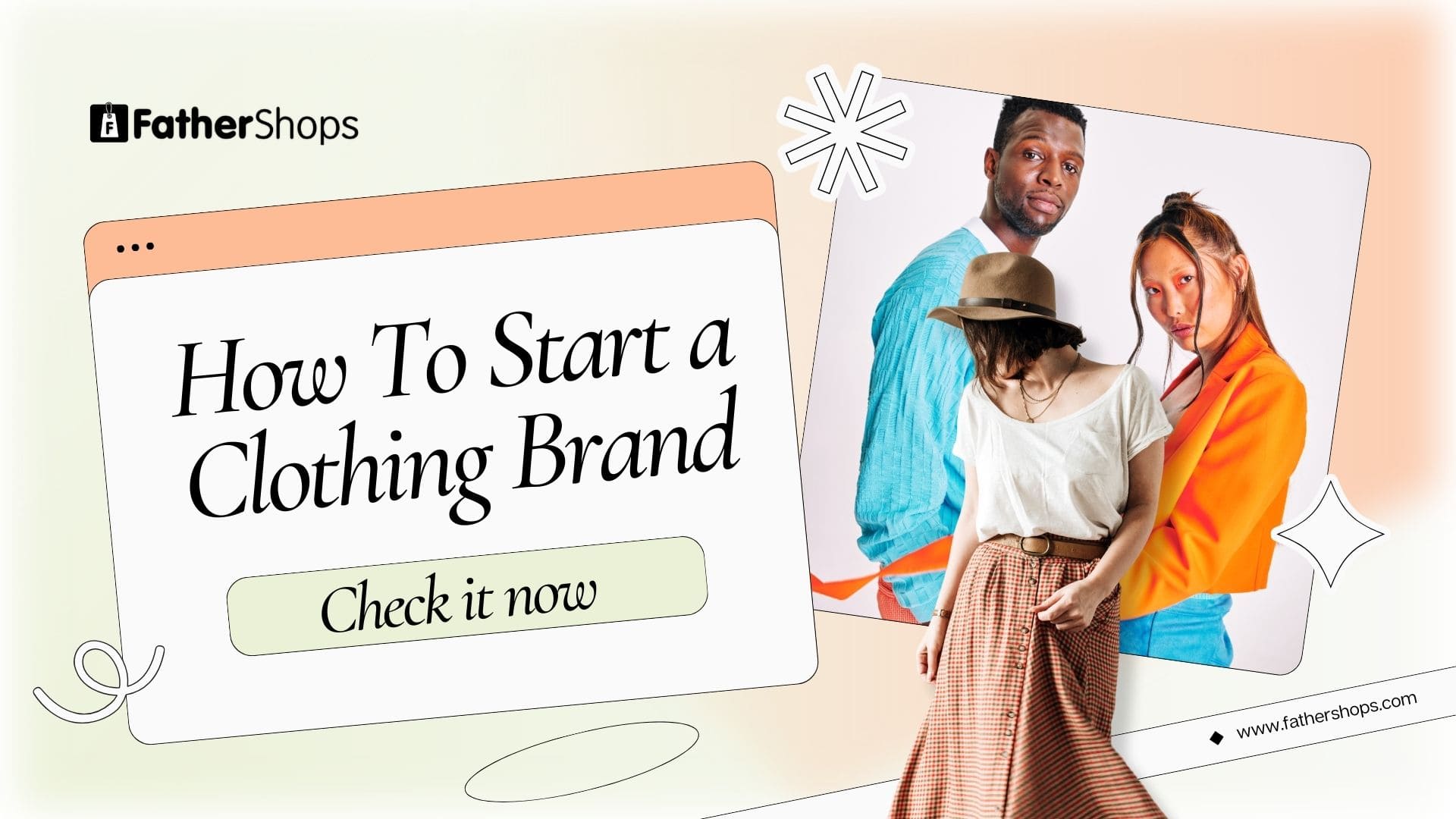

 Easily create your branded online store
Easily create your branded online store
